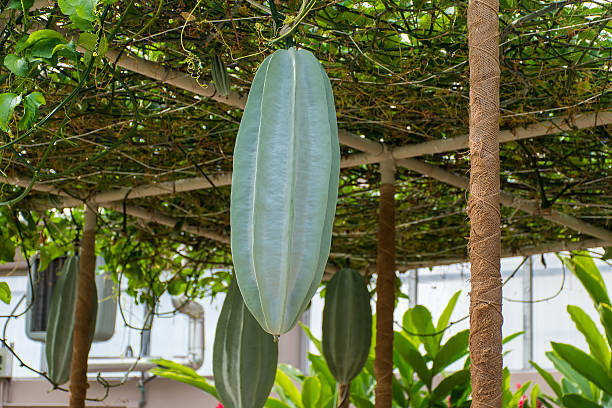In our last article, we showed our readers how they can actually run a successful Ugu farm in Nigeria. This guide can be applicable in other countries if the tips we showed is applied.
Let us continue reading to find out some of the fertilizers that you can use for your Ugu farm. This article discusses that and more.
Ugu, also known as fluted pumpkin, is a highly valued leafy vegetable popularly cultivated for its nutritious leaves. Originating from Africa, particularly West Africa, ugu farming in Nigeria has gained prominence as a lucrative small-scale agribusiness. This comprehensive guide provides essential insights and best practices for successful ugu cultivation, covering various aspects from seed selection to harvesting techniques.
Seed Selection and Preparation
One of the fundamental aspects of ugu farming is seed selection. Unlike many other crops, there are currently no developed ugu seed hybrids. Most growers rely on seeds extracted from pods for planting. When sourcing seeds, it’s crucial to ensure they are free from disease and infection to promote healthy plant growth.
Nursery Establishment
Growers have different preferences when it comes to establishing nurseries for ugu seedlings. Some opt to prepare clusters of nursery by raising ugu seedlings in peat moss or coco peat packed in PVC bags. Seeds should be planted at a depth of 5cm, with transplantation occurring after germination, typically within two weeks, to ensure optimal density.
Land Preparation and Soil Management
Ugu production thrives in a secured environment, as open environments may attract animal infringement and damage. Land clearing should precede soil ploughing to create a suitable bed formation for proper root penetration. During bed preparation, it’s essential to mix the soil with compost manure and super phosphate fertilizer to promote robust root development.
Planting Techniques
Depending on preferences and available resources, growers may opt for direct seeding or transplanting seedlings. Direct seeding involves planting seeds extracted from pods directly into prepared soil. Alternatively, growers with established nurseries can transplant seedlings by carefully tearing PVC bags to avoid root constraint.
Weed and Pest Management
Weeding is a critical aspect of ugu farming, as the plant doesn’t thrive well in the presence of competing weeds. Regular weeding ensures optimal growth and development of ugu plants. Additionally, ugu is susceptible to insect infestations, necessitating the application of pesticides. Alternating between pesticides such as Cypermethrin and Tihan can help prevent resistance.
Fertilization
Ugu plants respond well to fertilization, particularly nitrogen, potassium, and phosphorus. A balanced fertilizer application, such as NPK 20:10:10, two weeks after germination, followed by a mixture of Urea 46:0:0 with NPK 15:15:15 at 20-day intervals, promotes healthy foliage and root development. Deficiency of fertilizer can result in yellowing of leaves, indicating the need for supplementation.
Staking and Support
Given that ugu is a crawling plant, providing support through staking is essential for optimal growth and foliage development. Bamboo sticks and binding wire can be used for staking, with stakes at least 1.5 meters tall. This method helps prevent sprawling and ensures good quality foliage, suitable for both garden and commercial fields.
Harvesting and Management
Ugu leaves typically mature between 3-4 weeks after germination, signaling readiness for harvest. Careful stem cutting using a knife is recommended to avoid damaging the plant nodes. With proper management, ugu harvesting can continue for a period of six months or more, ensuring a steady supply of fresh produce.
In conclusion, ugu farming presents promising opportunities for small-scale agribusinesses in Nigeria and beyond. By adhering to best practices in seed selection, land preparation, planting, and management, growers can optimize yields and contribute to the sustainable production of this valuable leafy vegetable.
